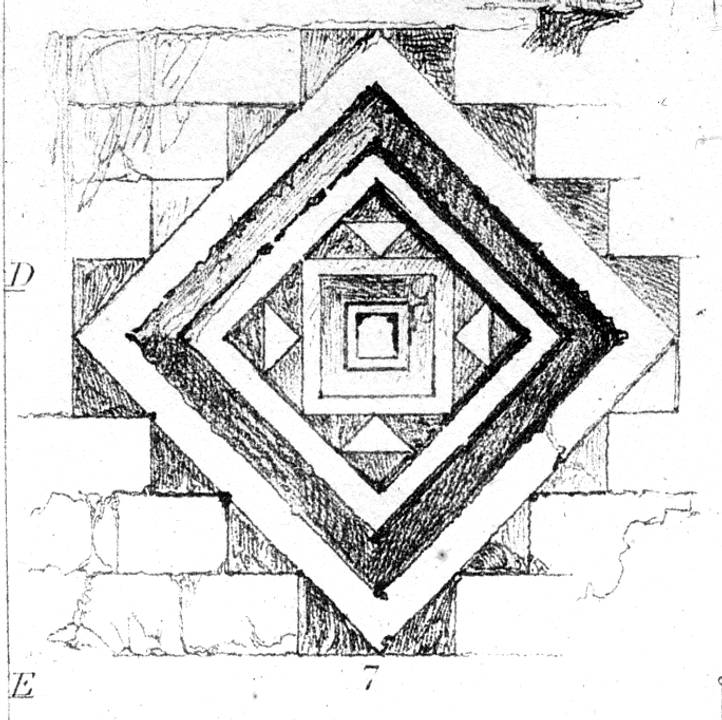
Sculptures from the Bas-reliefs of the North door of the Cathedral of Rouen drawn by John Ruskin and engraved by R. P. Cuff. 1855. 1 ½ x 1 5/8 inches. Plate XIV, The Seven Lamps of Architecture in Works, 8.217. Scanned image and text by George P. Landow [You may use this image without prior permission for any scholarly or educational purpose as long as you (1) credit the photographer and (2) link your document to this URL]. According to the "Index to the Plates" (8.xvii), the following to passages discuss this plate:
“The Lamp of Power”
. . . square panellings, set diagonally under their semicircles, an universal ornament in this style (Plate XII., fig. 7. (p. 111).
“The Lamp of Beauty”
I have just convicted the Greek fret of ugliness, because it has no precedent to allege for its arrangement except an artificial form of a rare metal. Let us bring into court an ornament of the Lombard architects, Plate XII., fig. 7, as exclusively composed of right lines as the other, only, observe, with the noble element of shadow added. This ornament, taken from the front of the Cathedral of Pisa, is universal throughout the Lombard churches of Pisa, Lucca, Pistoja, and Florence; and it will be a grave stain upon them if it cannot be defended. Its first apology for itself, made in a hurry, sounds marvellously like the Greek one, and highly dubious. It says that its terminal contour is the very image of a carefully prepared artificial crystal of common salt. Salt being, however, a substance considerably more familiar to us than bismuth, the chances are somewhat in favour of the accused Lombard ornament already. But it has more to say for itself, and more to the purpose; namely, that its main outline is one not only of natural crystallisation, but among the very first and commonest of crystalline forms, being the primal condition of the occurrence of the oxides of iron, copper, and tin, of the sulphurets of iron and lead, of fluor spar, etc.; and that those projecting forms in its surface represent the conditions of structure which effect the change into another relative and equally common crystalline form, the cube. This is quite enough. We may rest assured it is as good a combination of such simple right lines as can be put together, and gracefully fitted for every place in which such lines are necessary. [pp. 145-46]
Bibliography
Ruskin, John. Works, "The Library Edition." eds. E. T. Cook and Alexander Wedderburn. 39 vols. London: George Allen, 1903-1912.
Ruskin, John. The Seven Lamps of Architecture in Works, vol. 8. Hathi Trust Digital Library. Web. 6 June 2010.
Last modified 6 June 2010